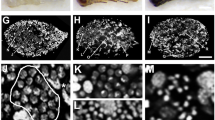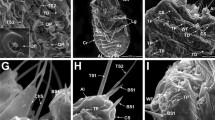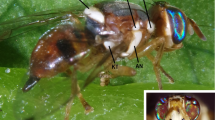Abstract
IN insects a micropyle is formed at the anterior pole of the egg and often has a very complicated structure. Sometimes it is a single pore or it may consist of numerous canals grouped together. The formation of the micropyle is due to a number of follicle cells or nurse cells having protoplasmic prolongations towards the egg, around which the chorion is secreted1. Snodgrass2 pointed out that although a micropylar area is present in the egg of Apis mellifera no actual pores have been demonstrated. There is no published work on the structure of the micropyle in chalcids.
This is a preview of subscription content, access via your institution
Access options
Subscribe to this journal
Receive 51 print issues and online access
$199.00 per year
only $3.90 per issue
Buy this article
- Purchase on Springer Link
- Instant access to full article PDF
Prices may be subject to local taxes which are calculated during checkout
Similar content being viewed by others
References
Raven, C. P., Oogenesis: The Storage of Developmental Information (Pergamon Press, 1961).
Snodgrass, R. E., The Anatomy of the Honey Bee (Comstock Pub. Associates, 1956).
Berland, L., Traité de Zoologie, 10, 826 (1951).
King, P. E., Nature, 189, 330 (1961).
Author information
Authors and Affiliations
Rights and permissions
About this article
Cite this article
KING, P. Structure of the Micropyle in Eggs of Nasonia vitripennis. Nature 195, 829–830 (1962). https://doi.org/10.1038/195829a0
Issue Date:
DOI: https://doi.org/10.1038/195829a0
This article is cited by
-
Morphogenesis of the micropylar apparatus in ovarian follicles of the fungus gnatBradysia tritici (syn.Sciara ocellaris)
Roux's Archives of Developmental Biology (1990)
-
Post-fertilization effect of incompatibility factors in Mormoniella
MGG Molecular & General Genetics (1968)
Comments
By submitting a comment you agree to abide by our Terms and Community Guidelines. If you find something abusive or that does not comply with our terms or guidelines please flag it as inappropriate.



